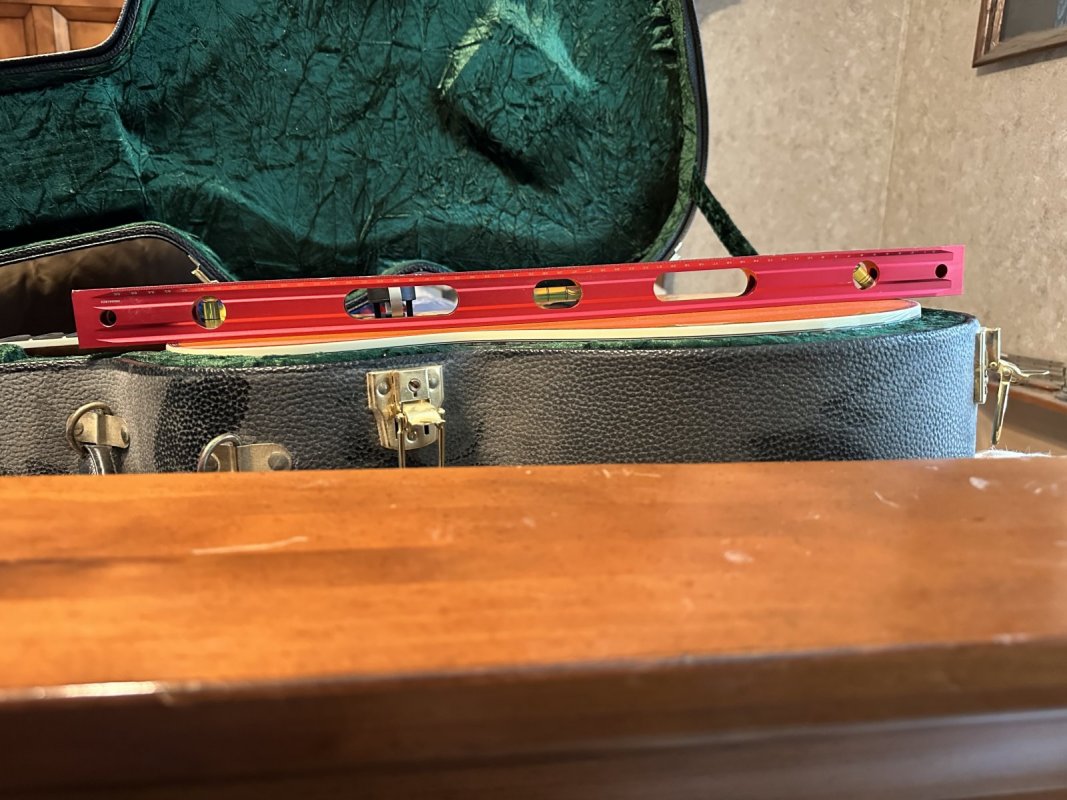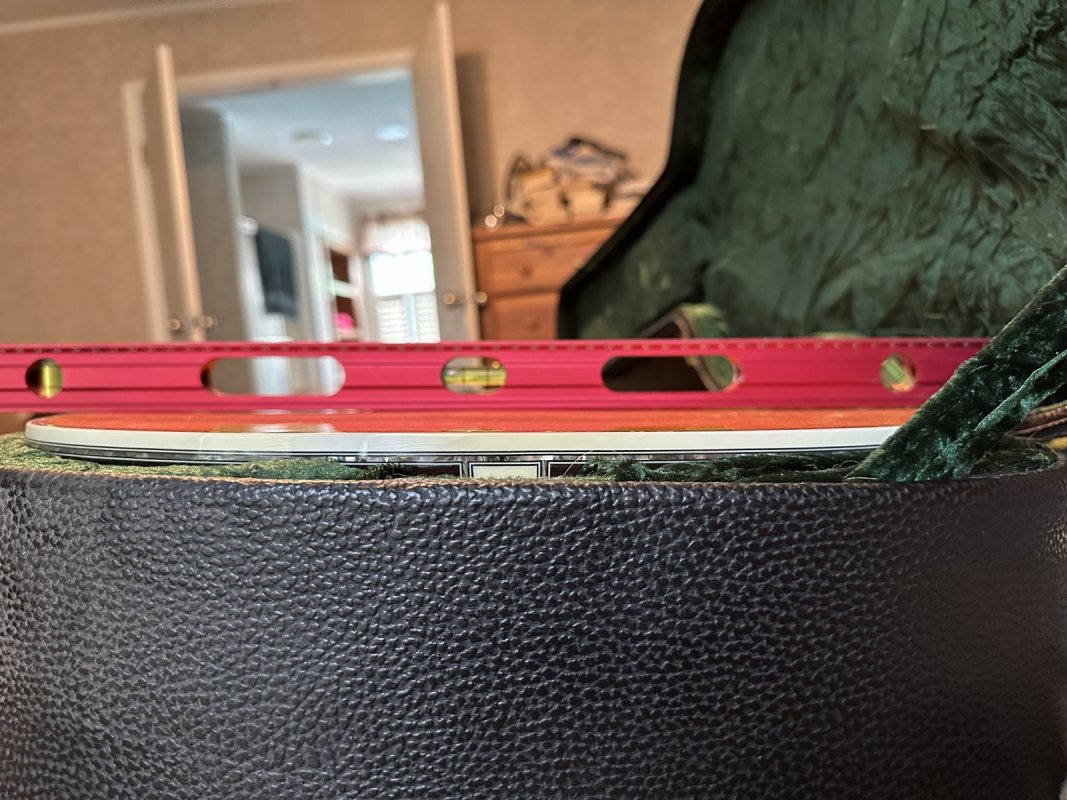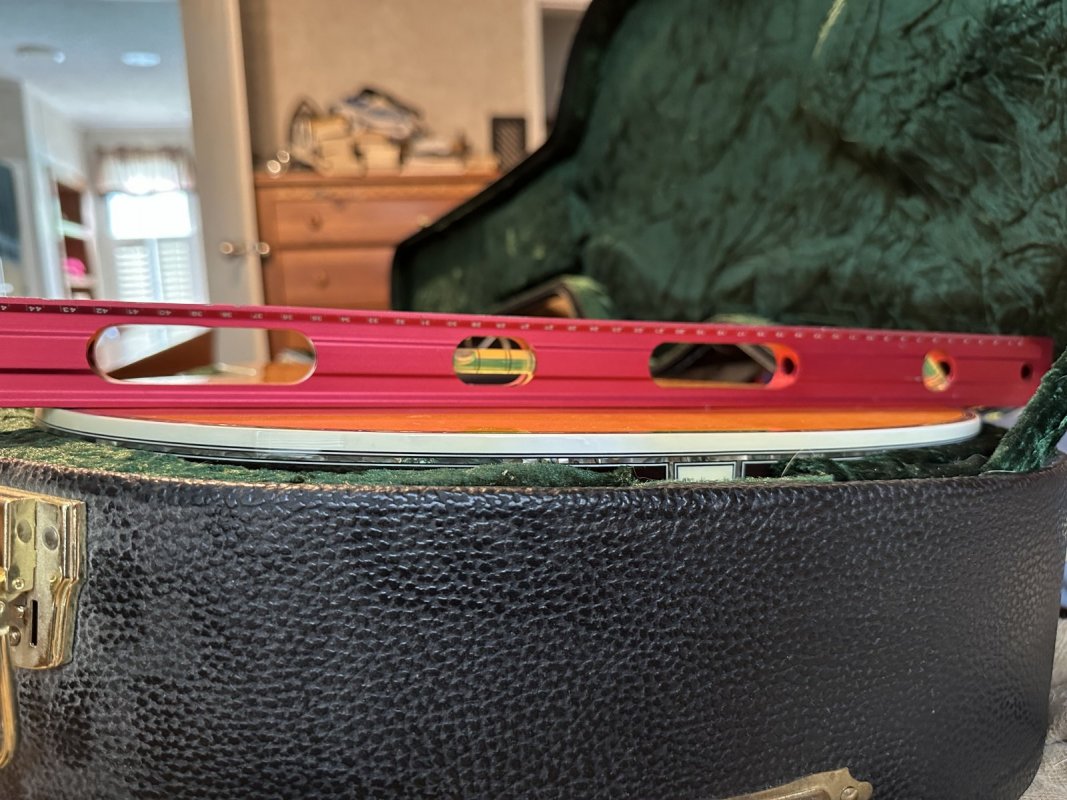Rayk
Enlightened Member
- Joined
- Apr 19, 2015
- Messages
- 5,793
- Reaction score
- 1,201
I can take a pic of the Blueridge as the straight edge is flat across its surface .All quality acoustic guitars have a radiused top, as stated above. Even if you go to a guitar shop, take a brand new, just out of the box decent, or better, quality guitar, the top will have a curve to it (i.e. radius). If you were to take all of the strings off, the top will still have a curve to it. So will the back. It is the way acoustic steel string guitars are made.
I cannot say anything for or against Saga guitars, as I have never seen one in person, nor heard one. But I would sincerely doubt that they are completely flat topped guitars, as measured with a straight edge laid across the lower bout. There are so many problems induced by a completely flat top that it makes it almost impossible to create a structurally stable steel string guitar. Not that it can't be done if you want to go out of your way to do it; with enough top thickness and heavy enough bracing, you can do anyting you want, but it won't be anything anybody would want to listen to.
I’ll also check my other models .
Saga says what Saga says ! Lol
Here’s the link to Ryan guitars anyone is free to ask him if he made flat top acoustic guitars 10 yrs ago as of now his site only mentions the back being so .
Over all it makes sense to build radius tops and backs so it would be in any mass produced companies interest to build this way to prevent future or near future issues along with custom builders .
I’ll take some pics after work .
Edit : found this post from Tom rest in peace bud .
| |||
|
To my knowledge Ryan, Olson, Charis are all flat tops. Traugott, Somogyi and myself radius the tops. I personally use 30' pretty much the same reasons why Petros does it. __________________ Tom Doerr |
Last edited:


